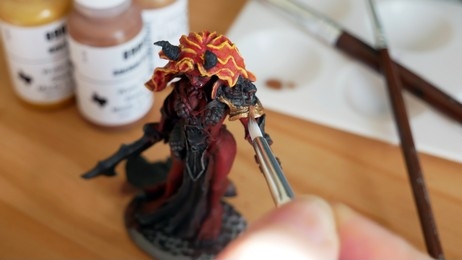From Concept to Creation: The Art of Designing D&D Miniatures
12:35 AMWithin the intricate, imaginative realm of Dungeons & Dragons (D&D), a whole universe unfolds across the tabletop, fueled not only by the sheer creativity of players and Dungeon Masters (DMs) but also by the tactile satisfaction of miniatures. What are D&D miniatures? Why do we need them, and what goes into creating such intricate designs? The journey from concept to creation is far more complex and fascinating than you might initially suspect.
To unravel the process behind their creation, let’s delve into the fascinating world of miniature design. These small-scale sculptures play a crucial role in communicating character personas, locale attributes, and, ultimately, the essence of the game. Everything matters, from the type of material utilized to the intricate hand-painted details. Through this post, we will trace the journey of a D&D miniature from the concept's inception to its final manifestation, offering a deeper appreciation of this art form.
Over the next sections, we will explore the various stages in the process of creating D&D miniatures, unravel the techniques employed by artists, and understand why these miniatures are more than mere game accessories. We'll also look at some of the challenges in miniature creation and ways to overcome them.
The Spark of Inspiration

Crafting a D&D miniature begins with a spark of inspiration, which could be drawn from a carefully considered detail in the game script, a storyboard, or the imaginative whim of an artist or game lover. The intricate details of a gnome's hair, the markings on a dragon's scales, or the folds in a sorcerer's cloak all originate from this initial stage.
To bring an idea to life, a designer must consider elements such as morphology, attire, and weaponry, designing their miniature to not only represent a character but also tell their unique story. Materials and resources are chosen carefully to achieve the desired look and feel desired. Each miniature is then meticulously planned and drafted prior to its creation, ensuring accuracy and coherence in the overall design.
Crafting the Concept
Next, each element of the miniature is intricately crafted. This begins with a wire frame sculpted into the figure's rough shape. This skeleton, called an armature, supports the form as the artist proceeds to flesh it out with clay, or lately, digital modeling tools.
Remarkable patience and precision are key, with designers often using magnifying glasses and incredibly fine tools to create details as minute as the twinkle in a character's eye or the grain in a wooden staff. The miniature design process develops a unique language of visual storytelling.
Breathing Life into Miniatures - The Painting Stage
Even the most meticulously sculpted miniature isn't quite complete until it's undergone a final transformation - painting. Color not only adds aesthetic appeal but also injects character into each figure. A lush cloak may indicate a character's wealth or royal status, while rusted armor could hint at past battles.
Painters work in layers to create intricate effects- starting with a base coat, building up color with various techniques such as dry brushing and washing to achieve shading, highlights and lowlights. Completing a single figure can take hours, or even days of painstaking work.
The Transformation to Game Piece
Finally, the miniature must be sealed to protect it from wear and tear during gameplay. The transformation from art piece to game piece is fascinating, as these are no longer just sculptures - they're functional parts of a game, designed to withstand handling, transportation, and storage.
Pros & Cons of Designing D&D Miniatures
Designing D&D miniatures has its unique joys and challenges. On one hand, the fact that the final product can bring an incredible amount of pleasure to gamers is deeply satisfying. It's creatively fulfilling, allowing designers to express their artistic talents in a unique medium.
However, the process requires a keen attention to detail which can be demanding. Also, ensuring functionality without compromising aesthetics is a constant balancing act.
Making the Impossible Possible – Overcoming Challenges

Despite these challenges, the world of miniature creation continues to flourish. Artists excel at turning hurdles into stepping stones, continually refining their techniques to produce miniatures that are both practical and beautiful. The use of new materials and technologies, such as 3D printing, has opened up limitless possibilities in the realm of miniature artistry.
Conclusion
The journey from concept to creation in D&D miniatures is an intriguing process, blending inspiration, creativity, precision and a hefty dose of patience to create these incredibly detailed game pieces. They are much more than mere accessories - they lend tangible resonance to the gameplay, allowing players to connect more deeply with their characters and the narrative.
The making of D&D miniatures is truly an art form worth appreciating, layered with tiny yet significant details that breathe life into a fantasy world. Each miniature embodies a story, capturing not just our eyes but our imagination too. Next time you hold a D&D miniature, know that you're holding a piece of someone's creativity; a brew of imagination shaped into reality by hands dedicated to crafting a unique, tangible gaming experience.
With the right blend of imagination and technical know-how, the world of D&D miniatures design is limited only by the extent of one’s creativity. Despite all the challenges, it's indeed a magical journey to be a part of, both as a creator and a game lover.






0 comments